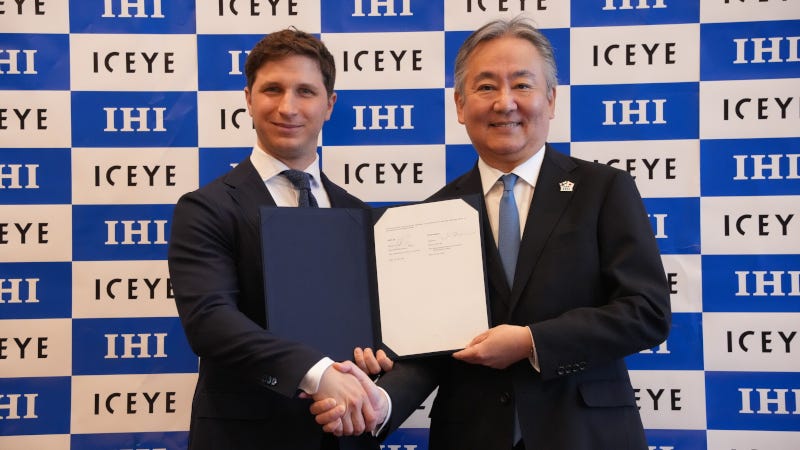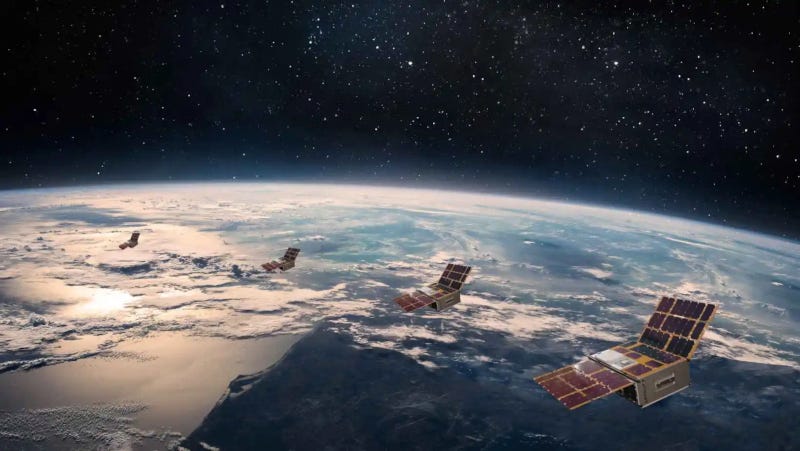A comprehensive security study has exposed significant vulnerabilities in geostationary satellite communications. The study found that sensitive data from corporations, governments and millions of consumers can be intercepted using equipment costing just a few hundred dollars.
The University of California, San Diego and University of Maryland research team observed 411 transponders across 39 geostationary satellites over a seven-month period, capturing unencrypted traffic that included cellular backhaul data, military communications, corporate networks and consumer internet activity using a consumer-grade satellite dish, positioning motor and TV tuner card mounted on the roof of a building at UCSD.
The captured data revealed extensive security gaps. Cellular backhaul transmissions from T-Mobile and other telecom providers exposed unencrypted calls, text messages, subscriber internet traffic, hardware identifiers and even encryption keys for cell towers in remote areas. Military and government communications included unprotected voice-over-internet-protocol calls, vessel tracking data and police operations. In-flight Wi-Fi systems transmitted passenger web browsing unencrypted, while multiple voice-over-internet-protocol providers broadcast call audio without protection.
Commercial entities including Walmart and financial institutions transmitted internal network traffic without encryption, exposing login credentials, corporate emails, inventory records and ATM networking information. Critical infrastructure operators—power utilities and oil and gas pipeline companies—used unprotected satellite links for remotely operated supervisory control and data acquisition systems and repair communications.
The findings were published in the peer-reviewed ‘Proceedings of the 32nd ACM Conference on Computer and Communications Security’.
The researchers recommend treating satellite links like unsecured public wireless networks. The study’s custom protocol-parsing code has been released as open-source software on GitHub.
-0-
A Memorandum of Understanding (MoU) to develop, test, and deploy Vehicle-to-Everything (V2X) technologies that will advance autonomous mobility and smart city infrastructure across the United Arab Emirates has been signed by Space42 an e& UAE, the flagship telecom arm of global technology group e&.
The partnership combines Space42’s Sovereign Mobility Cloud and autonomous vehicle (AV) solutions with e& UAE’s 5.5G, edge computing, and secure communication protocols, with a roadmap to 6G. Together, the companies will co-develop pilot projects, regulatory frameworks, and business models to enable connected and autonomous mobility nationwide.
Vehicle-to-Everything (V2X) technology enables vehicles to communicate with their surroundings, including other cars, road infrastructure, and pedestrians, to make driving safer and more efficient.
This collaboration builds on both companies’ commitment to advancing the mission of the national Smart Autonomous Systems Council.
-0-
A procurement contract to build an Earth observation satellite constellation for security, civilian, and commercial use has been signed between Japanese corporation IHI and ICEYE.
Under the terms of the contract, IHI has placed an initial order for four satellites and associated image acquisition system, with the option to procure a further 20 satellites in the future. The first satellites are expected to begin phased commissioning and data delivery from around April 2026.
Two of the initial four satellites are planned to be assembled and tested in Japan, with preparations already under way between IHI and ICEYE. Subject to successful demonstration results, IHI plans to exercise options for the remaining 20 satellites in phases, beginning in 2026 and targeting completion of the 24-satellite constellation by fiscal year 2029.
Private investment in space technology companies reached a record $3.5 billion in the third quarter of 2025, marking a sustained rebound in an industry that has matured beyond a handful of mega-rounds to a broader base of hardware-focused scale-ups. That’s according to a quarterly report by Generation Space, the U.S. division of Seraphim Space Group.
The third-quarter figure represents an increase from $3.1 billion in the second quarter, bringing trailing 12-month investment to $10.4 billion—just short of the all-time high of $10.9 billion set in the second quarter of 2021. The recovery reflects growing investor confidence across the space technology sector after a pullback through 2022.
The United States continues to dominate global investment volumes, accounting for 55% of total investment in the 12 months ending in the third quarter, while China accounted for 16% and saw the two largest deals of the quarter. Investment activity in the third quarter remained concentrated in businesses with significant hardware components.
Unlike the 2020-21 cycle driven by a few deals exceeding $1 billion, the third quarter of 2025 was defined by a broader set of raises between $100 million and $300 million across multiple businesses, marking what the report characterizes as a more balanced and mature phase for the sector.
-0-
The National Geospatial-Intelligence Agency (NGA) has awarded a contract to Planet under the Luno B indefinite delivery, indefinite quantity contract. The $12.8 million initial award is for Advanced Analytics for Maritime Operations and Reconnaissance.
Under this award, Planet will provide the NGA with AI-enabled Maritime Domain Awareness solutions, which include vessel detections and monitoring over key areas of interest in Asia-Pacific. The contract was won with Planet partner SynMax.
Luno B was developed to provide the national security community with timely access to high-quality commercial Geospatial Intelligence.
-0-
A system that allows satellites to connect with IoT devices without relying on GNSS satellite navigation systems ... such as the American GPS ... will be tested by ESA and Sateliot. This development may open new opportunities in sectors such as Defense and Security, where Europe’s technological autonomy and operation in “GNSS-denied” environments are strategic priorities.
The FreeGNSSNetwork project, signed with the European Space Agency (ESA) and led jointly with Spanish technology company GMV, eliminates GNSS dependency by using advanced algorithms that enable devices to calculate their position directly from the satellites’ signals. This maintains a stable and accurate connection even under complex conditions such as wartime scenarios. According to the company, this project represents a paradigm shift and lays the groundwork for developing 6G technology, in which Sateliot actively contributes within the 3GPP framework.
FreeGNSSNetwork enables device positioning with an accuracy of approximately 10 meters and provides extremely precise time synchronization services of 50 nanoseconds. The system is currently being tested in laboratories that replicate real satellite communication conditions and will be demonstrated in orbit with prototype satellites and terminals, sending Positioning, Navigation, and Timing (PNT) data directly to IoT devices.

















